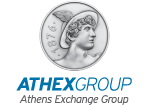Developments in the Greek government bond market - January 2007
On international markets, government bonds recorded significant losses for the second month in a row in January, and yields rose on all maturities, following the release of positive economic data in both the US and the Euro-zone. In the US, signs of stabilization in the housing market, solid labour market data and overall positive economic growth data published during the month raised investors'' worries about inflation risk. Risk that was repeatedly mentioned by Federal Reserve (FED) officials in several statements released during January. In the Euro-zone, while economic growth remained positive, the rate of monetary and credit expansion continued at high levels reinforcing investors'' expectation of a continuation of interest rates increases by the European Central Bank during 2007. In addition, on January 11 the Bank of England increased interest rates by 25 basis points to 5.25%, while both the FED and the ECB kept monetary policy unchanged at their January meetings. On the Greek electronic secondary securities market (HDAT), government bonds recorded losses on all maturities and particularly at the long end of the yield curve, in line with the performance seen in the rest of the Euro-zone markets. Therefore, the yield curve steepened slightly while shifting upwards. More specifically, 3-year bond yields rose by 9 bps to 4.06% at the end of January from 3.97% at the end of December, while 30-year bond yields rose by 13 bps to 4.58% from 4.45%. Thus, the steepness of yield curve (measured as the yield difference between the 30 and the 3-year bond yields) increased to 52 bps at the end of January from 48 bps a month earlier. On January 12, a new 10-year benchmark bond was successfully introduced in the market via syndication, with maturity date 20/7/2017 and coupon 4.30%. On the first day of trading the yield of the new 10-year benchmark was 4.32% and it rose to 4.36% by the end of the month. Finally, the average monthly spread between the Greek and the German 10-year benchmark bond yields remained unchanged at 26 bps for the third month in a row.
Benchmark bond prices fell between 15 and 211 bps in January. The 3-year bond price fell to 98.49 at the end of January from 98.64 at the end of December. The 30-year bond, which recorded the highest loss, fell to 98.68 from 100.79, while the price of the new 10-year benchmark fell to 99.45 on January 31 from 99.78 on its first day of trading on HDAT on January 12.
Trading volume on HDAT in January amounted to EUR 64.31 billion worth of transactions compared to EUR 45.01 billion in December and to EUR 54.92 billion in January 2006. The daily average turnover was EUR 2.92 billion compared to EUR 2.37 billion during the previous month. Trading activity was mainly focused on bonds with remaining maturity between 7 and 15 years, which absorbed EUR 42.86 billion worth of transactions, or 67% of the overall traded volume. The most actively traded bond was the previous 10-year benchmark, maturing on 20/7/2016, with EUR 18.1 billion worth of transactions followed by the new 10-year benchmark with EUR 14.6 billion. Of the 11,428 orders executed on HDAT, 53.35% were "buy" orders and 46.65% "sell" orders.







 20240917 Bank of Cyprus Holdings plc - Summary Document-ENG-Final.PDF
20240917 Bank of Cyprus Holdings plc - Summary Document-ENG-Final.PDF  AUTOHELLAS_PROSPECTUS.pdf.crdownload
AUTOHELLAS_PROSPECTUS.pdf.crdownload  Resolution No 22 Regulation of Technical Matters for Trading on ATHEX Markets 22042024
Resolution No 22 Regulation of Technical Matters for Trading on ATHEX Markets 22042024 
